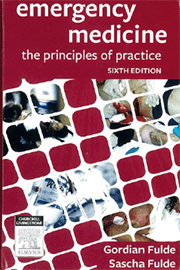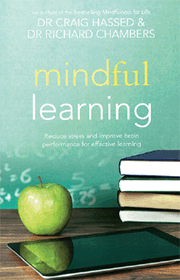Emergency medicine: the principles of practice 6th edition

Gordian Fulde, Sascha Fulde
Australia: Elsevier
ISBN 9780729541466, $99.95
Emergency medicine: the principles of practice 6th edition is a reference text that covers a broad range of topics a junior emergency doctor or medical student could benefit from. The chapters cover topics that an emergency department would encounter over the course of a day. The book also has some more social items that are not usually covered in most ‘handbook-sized’ emergency medicine textbooks.
The book begins with quick reference guides that are well collated and serve as memory aids for topics that should be well known to an emergency doctor. The book focuses on identifying treatment, with some algorithms and, mostly, tables of medications and doses. There is a contents page for the quick reference (QR) guides, but at times there is not a clear layout of topics. For example QR 16 and 17 look at the management of ST segment elevation myocardial infarction (STEMI) and non-STEMI, followed by ECG basics in QR 19 and QR 20, which concludes with the Sgarbossa criteria (diagnosis of myocardial infarction in bundle branch block). The reference pages refer to cardiology only as QR 14, and ECG as QR 19, not making it apparent, at times, where to find items.
In the listing of the contents, for the sake of brevity, the editors have attempted to list all subheadings under a topic in an unsystematic order. I find myself having to go through the chapter to identify the section required, or navigate more quickly by using the index. As an example, Chapter 2, ‘Securing the airway, ventilation and procedural sedation’, has a paragraph listing all topics in a single sentence. I find this cumbersome and difficult to use in finding relevant information quickly.
There is no uniform layout for each chapter. Some have succinct descriptions of clinical features, some key points to note, followed by useful investigations and management. Others are verbose in their presentation and take some time to identify pertinent information. Pictures or X-rays of fractures in the orthopaedic chapter would be very welcome when compared with the neurosurgical chapter, which has reproduced computed tomography images of intracranial haemorrhage.
The book is aimed at medical students and junior doctors, with pearls interspersed within the chapters. There are alternative emergency medicine handbooks that are structured more clearly, but Emergency medicine: the principles of practice 6th edition seems to cover a greater variety of conditions. This book is not ideal as a quick reference for the general practitioner but may serve as a refresher for some topics previously covered.
Dr Havish Srinath
Tweed Heads, NSW
Mindful learning

Craig Hassed, Richard Chambers
Australia: Exisle Publishing Pty Ltd, 2014
ISBN 9781921966392, $29.99
This is a thought-provoking and useful book on the application of mindfulness to learning, and dealing with the stress associated with study. It is a delight to read. It is well written and is divided into 20 short, easy-to-process chapters. Both authors are leaders in their fields. Craig Hassed is an academic general practitioner (GP), university lecturer and mindfulness consultant. He is also a prolific author. Richard Chambers is a clinical psychologist and mindfulness consultant at Monash University.
The book begins by defining education and mindfulness. Essentially, mindfulness is living with awareness. This involves knowing where the attention is, prioritising the attention and getting it to stay there. The authors highlight the four main aspects of mindfulness from a cognitive perspective, which include perception, letting go, acceptance and living in the present moment.
The beauty of this book is that it applies the technique of mindfulness to the practical skill of learning. The authors do this by explaining how mindfulness can improve executive functioning, reduce stress and performance anxiety, and deal with deadlines. Mindfulness can improve mental flexibility and problem solving as well as enhancing creativity and communication. It can improve the wise and efficient use of technology as well as minimising distractions.
Each application of mindfulness is supported with useful analogies and practical suggestions, as well as up-to-date published research. The authors encourage experimentation with the techniques suggested and the last chapter has 12 exercises with scripts to facilitate an experience of mindfulness.
In Chapter 5 we are given an insight into the successful MAS program (‘Mindfulness for Academic Success’) used at Monash University. Several of the exercises used in this program are included in the final section.
This book is packed with useful information and has broad appeal. It is relevant to students and their parents, GP registrars and, more widely, anyone who is an ongoing learner. Highly recommended.
Dr Patrizia Boetto
Melbourne, VIC